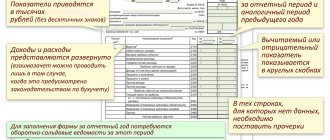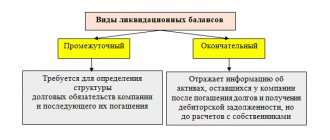Interim accounting financial statements 2022
The preparation of interim financial statements is not included in the mandatory procedures from 2022 in accordance with Order of the Ministry of Finance No. 74 n. Its presentation is required if this obligation is imposed on the company:
- by law;
- regulatory document;
- agreement;
- constituent document.
In this case, the organization has the right to compile it for its own use. There is no need to submit it to the tax control or statistical authorities.
What is interim reporting
The accounting law explains what PBO is - interim accounting reporting, that is, reports that are submitted not at the end of the year, but for a specific period during the reporting period (Part 5 of Article 13 402-FZ). Previously, the filing period was equal to a month, quarter or other period of time; now the exact period for the formation of PBO is not established in 402-FZ.
IMPORTANT!
As of May 7, 2018, the obligation to submit interim financial statements was canceled (Order of the Ministry of Finance No. 74n dated April 11, 2018). The regulatory document of the Ministry of Finance canceled clause 29 of the accounting regulations, and the decision of the Supreme Court No. AKPI17-1010 of January 29, 2018 - clause 48 of PBU 4/99, approved. by order of the Ministry of Finance No. 43n dated 07/06/1999. Before these changes came into force, everyone who was not exempt from it by law was required to compile a PBO.
In 2022, organizations will generate periodic accounting reports if such an obligation is established in a specific law or regulation, in contracts, constituent documents, or decisions of owners. Legislative regulations do not provide specific instructions on whether it is necessary to prepare interim financial statements in a PJSC: if the owners made such a decision, then the PBO will have to be prepared at a specified frequency.
If a company is not required to file periodic registers, it does not prepare them. If counterparties request copies of such control documents, they should provide a written explanation that the organization does not generate a PBP.
Period of interim reporting and deadlines for its submission
Since the generation of this type of reports is not mandatory, the frequency is determined by the company management. The most rational approach is to compile it at the end of each quarter. This is a sufficient period to understand the dynamics of the company's development.
The decision on the preparation and timing of the formation of financial statements is recorded in the accounting policy.
Interim reporting combines information about the property and finances of a legal entity at a specific moment. Formation is on an accrual basis from January 1 of the current year. Most often, 30 days are allotted for preparing the document from the end of the period.
Results
When preparing interim reporting for its investors/creditors, a company should understand that the frequency of presentation of such reports is best chosen based on the expectations of stakeholders.
The company has the right to generate such reporting either in full or in a truncated form, reflecting only significant business events and showing in the reports current changes for each individual period. In addition, we should not forget that even when choosing the option with abbreviated reports, the standard imposes a number of requirements both on the composition of the report package and on the content. If a complete package is being formed, then you should focus on the standards of IFRS (IAS) 1. You can find more complete information on the topic in ConsultantPlus. Free trial access to the system for 2 days.
Preparation of interim financial statements
Annual and interim financial statements are similar in terms of the main preparation criteria. They must contain reliable information current as of the date of submission.
The PBO differs from the annual report:
- No balance reformation. Profit/loss for the previous financial year is written off at the end of the reporting year, and throughout the year is recorded in account 99.
- Drawing up a PBP does not require an inventory.
- Income tax is calculated based on the rate that will subsequently be applied to revenue for the year.
- There is no need to recognize planned expenses and lost revenues. This can only be done if all recognition criteria are met.
- There is no need to involve appraisers to evaluate assets. This is done independently.
What requirements must the information reflected in interim reports meet?
The main requirement for the information reflected in the reporting, which is prescribed in the analyzed standard, is its materiality (clause 23). The essence of the requirement is that information for users of reporting must carry an important semantic load. Without reflecting such information, stakeholders will not be able to obtain an objective picture of the company’s business and its interim results. Therefore, all information that is material must be recorded in the interim reports of the company.
PAY ATTENTION! At the same time, if certain events were significant and were reflected in the interim reports, this does not mean that such events will necessarily have to be reflected in the annual reports.
After all, for example, individual significant events may occur in different reporting periods, which in total for the year will not lead to a change (the company took out a large loan in the 1st quarter, but returned it to the bank in full in the 2nd).
Preparing for interim reporting
Before starting work on filling out reporting documents, prepare primary data for them. To do this, it is necessary to complete all operations for the period for which the document is being prepared, as well as calculate taxes.
The rules for drawing up the PBO do not differ from the rules that accounting follows when preparing the annual balance sheet:
- The documents are drawn up in Russian.
- Amounts are written in “thousands”. rub.".
- Negative values are enclosed in parentheses.
- Missing indicators are replaced with dashes.
- The data is presented in comparison with similar indicators of the previous period.
Goals and conditions for maintaining documentation
Accounting statements are a set of documents that reflect all the nuances of an enterprise’s economic activity for a certain period, the final stage of work, which gives the most complete picture of the economic situation at the enterprise. The statements are compiled according to accounting, operational and statistical data.
Reporting documentation is not only a tribute to the current legislation, it also allows the head of an enterprise to analyze production results, make important decisions on planning business activities, navigate future plans, calculate unnecessary costs, and so on.
In addition, regulatory authorities - audit organizations, tax authorities - through data analysis can give a comprehensive assessment of the organization’s success and determine whether the necessary legal requirements are met. If the head of an enterprise needs an expert opinion or an economic analysis of the organization, the specialist will also need to study the financial statements.
Back to contents
Preparation and submission of an interim report
The financial report includes the full name of the legal entity, the positions of the employees who compile it, and their signatures.
When working with a balance sheet, it is necessary to take into account that the information at the beginning of the period must coincide with the information at the end of the previous period. Therefore, when preparing each subsequent report, you must refer to the previous one.
Financial statements are most often accompanied by explanatory notes. They explain the indicators presented and also include a description of the assessment methods used.
Types of reporting
Since financial statements are based on data from primary accounting documents, it is necessary to comply with the established requirements for their maintenance. First of all, we mean continuity, reliability and timeliness. The information must be presented clearly and objectively and in such a way that data for, for example, July 2022 can be easily compared with data for July 2016 and 2022. Of course, you cannot provide false information or deliberately distort facts and data.
Accounting statements are classified according to their intended purpose, the degree of generalization of data and the frequency of preparation. Depending on the frequency of preparation, there are interim and annual financial statements.
Back to contents
Annual reporting
It is clear that annual financial statements are prepared for the period from January to December of the current year. Then it is sent for verification to the tax service.
According to the requirements of the Law “On Accounting”, the annual reporting should include:
- balance sheet and appendices thereto;
- financial results report with attachments;
- explanatory note.
If an enterprise is subject to mandatory audit, an auditor's report must be attached to the annual financial statements, which confirms the accuracy of the statements. The balance sheet and other documents can be signed only after an audit has been carried out and an appropriate conclusion has been made.
Back to contents
What is included in the PBO
The composition of interim financial statements must include:
- balance sheet;
- Profits and Losses Report.
The balance sheet is the main reporting document. It indicates the financial position of the company as of the reporting date. It contains information about assets and liabilities. These include property, own and borrowed funds, liabilities. Combined into a single form, this information allows you to assess the financial stability of a legal entity.
The financial results report is intended to provide information about the company's income, consider its development prospects or areas of activity that require special attention.
Interim reporting forms are based on standard forms of balance sheet and income statement; if necessary, their structure needs to be modified to take into account the requirements of the company's accounting policies.
It is easy to create a PBO in the Astral Report 5.0 service. It contains the latest current forms of reporting documents, and data can be downloaded from any accounting system. The built-in assistant will help you prepare a report on the cloud service, which will tell you what data needs to be entered in each line.
By decision of the founder, the composition of the PBO can be expanded and also include cash flow forms, explanatory notes and other documents
What information should be included in the interim financial statements?
Despite the fact that standard forms of reports that must be generated by the company based on the results of interim results have been defined, the standard imposes some specific requirements for the content of such reports.
So, for example, according to paragraph 9 of IFRS 34 , if a company decides to show a complete picture of affairs at the enterprise during the reporting period and generate a complete set of reports, then the requirements for the content of such reports will be the same as for regular annual reports. They are prescribed in IFRS (IAS) 1.
But if an organization generates a truncated package of documents, then, first of all, you should know that the above reports must include all article headings and totals that were reflected in the last annual reports compiled (clause 10 of the standard).
For example, if an interim balance sheet is formed, then it can only show non-current assets, current assets, capital, etc., i.e., without detailing specific items.
PAY ATTENTION! However, if, due to the lack of detail on a particular article, an interested person may form an incorrect picture of the company’s business, the company is obliged to provide such detail (clause 10 of the standard).
For example, if a company has too much accounts receivable, but not enough cash on hand, then such details need to be provided, since a large volume of current assets alone will not be enough for an investor to understand the picture of the business.
In addition, companies should remember that if they calculate basic and diluted earnings per share, such information for the reporting period should also be included in the condensed statements (paragraph 11 of IAS 34 ).
Further. Clause 10 of the standard in question requires that abbreviated reports contain not only headings, but also notes to them. In such notes, the company should indicate what significant events that influenced the company’s performance occurred during the reporting period. These may include, for example, recognition of a loss, sale of fixed assets, etc. Examples of such events are specified in clause 15B of the standard .
In addition, in the notes to the reports for interim periods, the company must also reflect a number of other information, which is listed in paragraph 16A of the standard . For example, explain the seasonality and cyclical nature of the business, describe events that took place after the end of the reporting period and were not included in interim reports, etc.
IMPORTANT! It is important in the reports to record whether the information complies with the requirements of IFRS 34.







